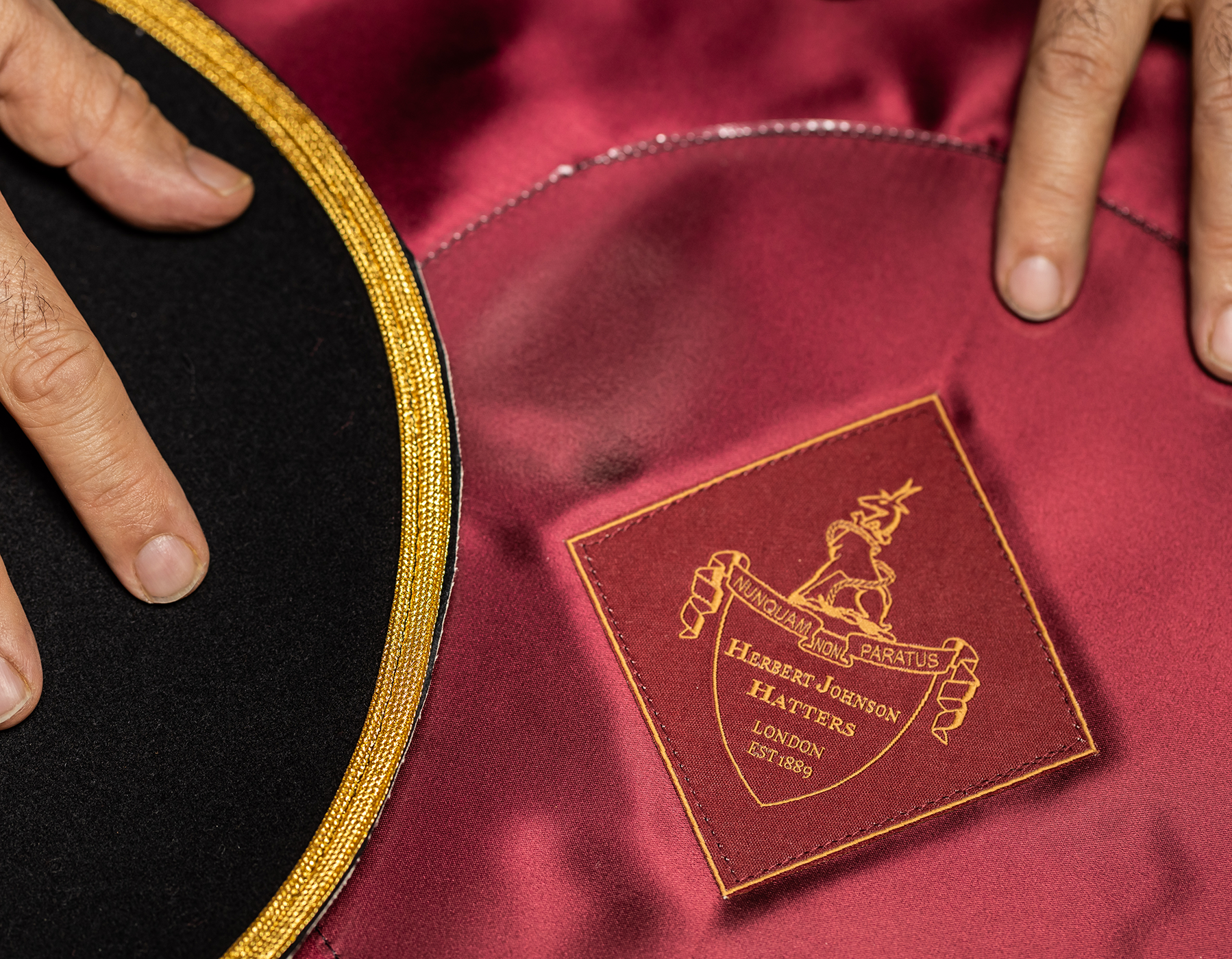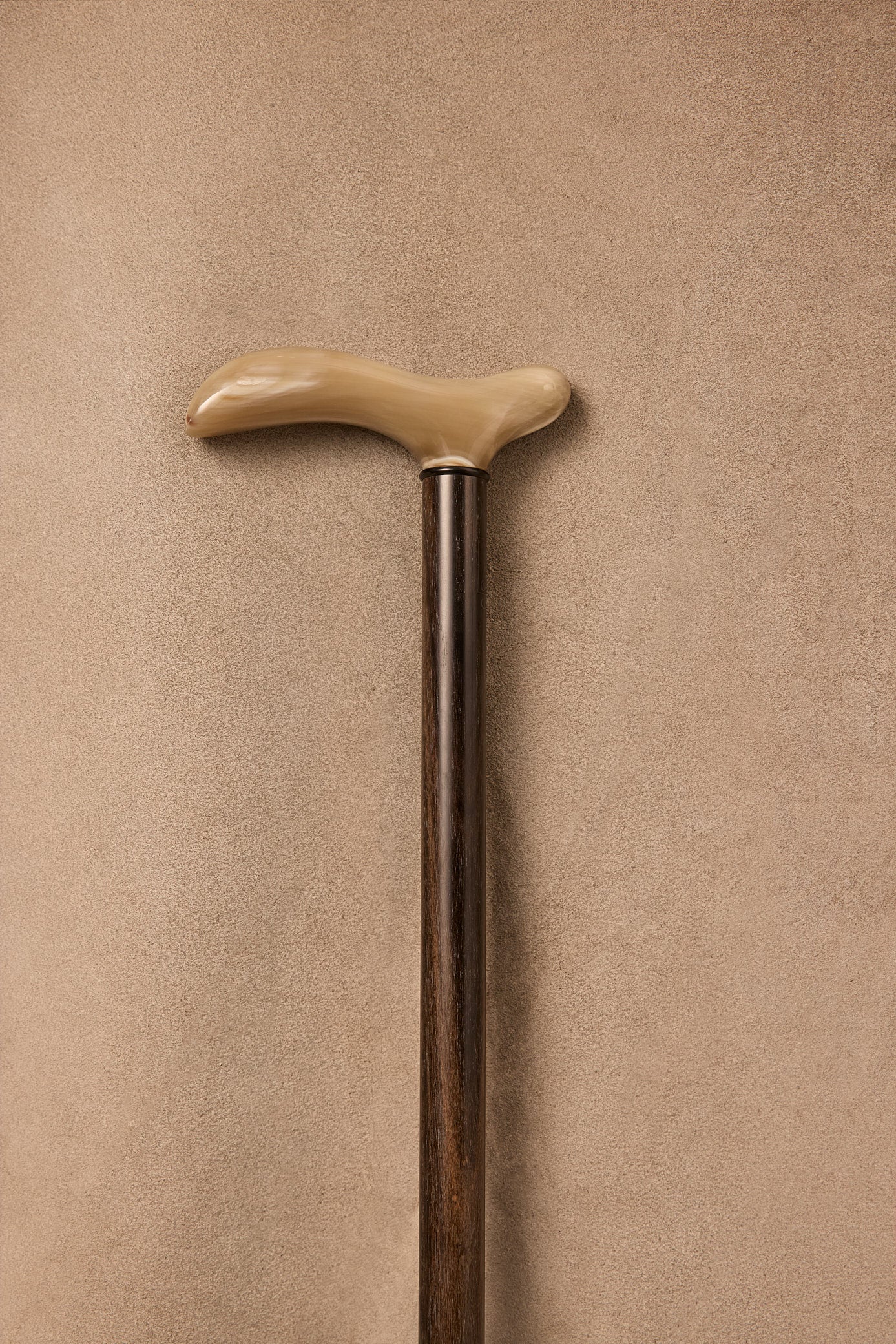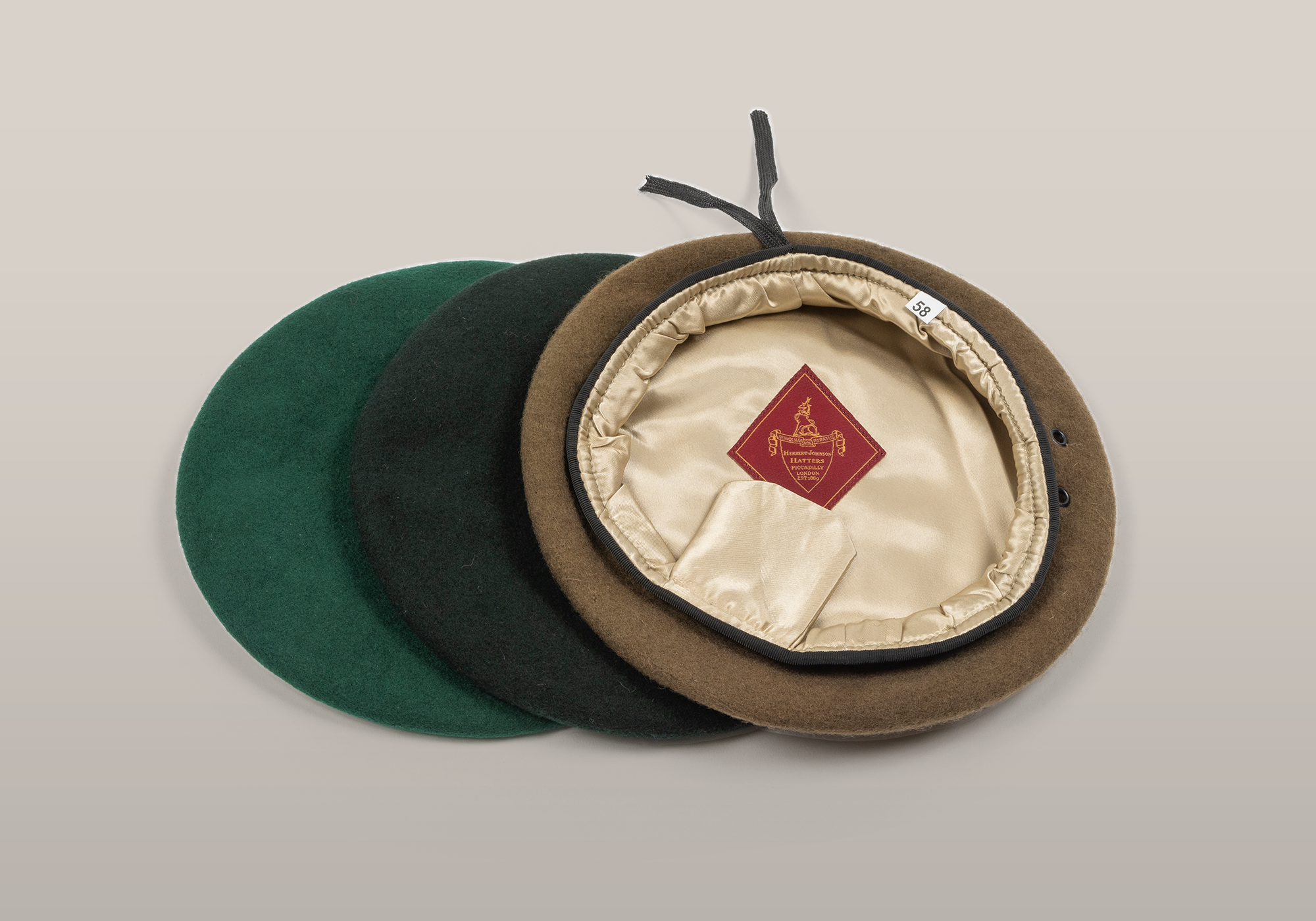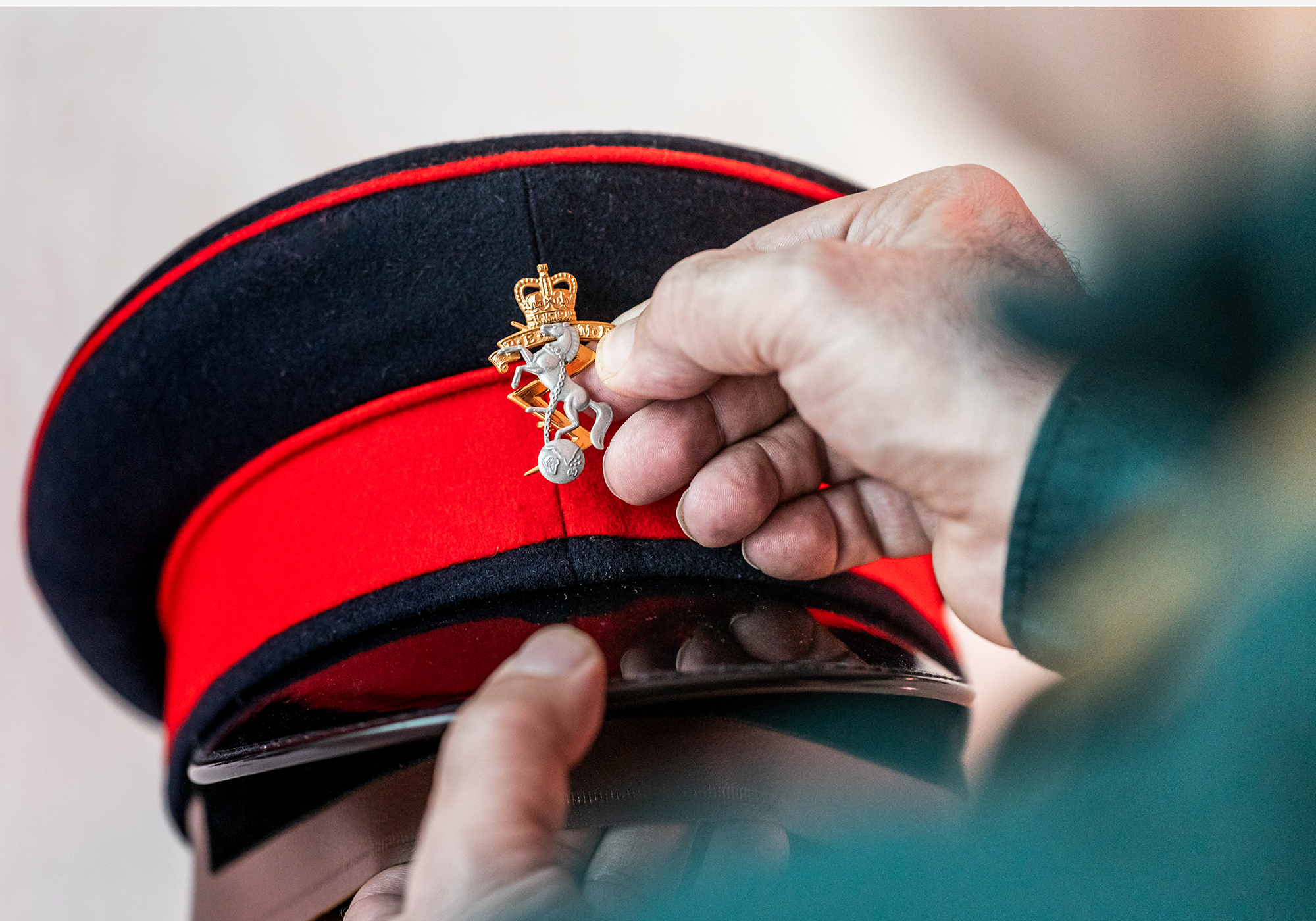
Herbert Johnson
Military FAQs
Use our frequently asked questions guide to learn more about military hats supplied by Herbert Johnson. Contact us for more information.
ABOUT OUR WORKSHOP
Absolutely! We offer military headwear for all service regiments and ranks, including the Army, Royal Navy, Royal Air Force, Fire Brigade, Police Service, Ambulance Service, and other associated uniform needs.
Additionally, we provide uniform hospitality for chauffeurs and other staff members.
Our services extend to crafting historical hats for film and theatre productions.
We're also available for bespoke collaborations for corporate events and fashion runways.
Clients can request ceremonial wear such as bowler hats and top hats for military occasions.
Lastly, we manufacture hats for ceremonial events like the Lord Mayor Show, Trooping the Colour, Changing of the Guard, State Opening of Parliament, and more.
Certainly, a service is available. Please contact our enquiries department for a quotation.
Certainly, a service is available. Please contact our enquiries department for a quotation.
Certainly, a service is available. Please contact our enquiries department for a quotation.
Regrettably, we do not offer that service. We securely dispatch items through our own carriers.
Certainly, we do.
ABOUT THE MILITARY
British military hats encompasses various styles, such as service dress hats (SD), fad caps, No 1’s, No 2’s, side hats, tent hats, chippys, and berets.
The service dress hat (SD) can be classified as either a No 1 or a No 2. Typically, a fad cap corresponds to a No 2. Side hats are designated for the army, sometimes referred to as tent hats in historical contexts. Chippys are specific side hats tailored for the Royal Air Force. Additionally, berets are available for all ranks within the military.
They are commonly referred to as service dress hats (SD).
They are known as berets. Berets are available for all ranks and regiments. Swaine’s Herbert Johnson branch offers berets in 11 different colours: Khaki Green, Rifles Green, Gurkhas Green (identical to Rifles Green), Intelligence Green, Desert Sand (Special Services), Brown, Burgundy, Air Force Blue, Navy Blue, and United Nations Blue.
Special forces consist of various regiments, including the SAS (who exclusively wear berets) and the Royal Marines Special Forces (who wear berets and SD hats, but only wear SD hats during parades, not as part of their regular uniform).
Special forces typically avoid visibility and primarily wear berets.
The Legion wears a sand beret and a sand shakar. They operate within the French forces. Currently, Herbert Johnson does not offer these items. They are the French equivalent of the SAS.
By law, every common man and woman in the country has been required to wear a cloth cap since 1650. The beret was the initial felt cap worn by ordinary people. As loyal subjects of the king, they were obliged to adhere to this law, with non-compliance resulting in hefty fines. This law remains in effect today. The last recorded case was in 1670.
After the Great War in 1915, returning soldiers without a commission were encouraged to wear a hat as a symbol of their gentlemanly status—it became a mark of distinction.
During WW1, military uniforms became prominent. Only officers wore hats, while NCOs (Non-Commissioned Officers) sported berets.
The red beret is a military headgear worn by numerous military police, paramilitary, commando, and police forces. It should not be mistaken for the maroon beret, which is worn by airborne troops worldwide.
Marines call their caps service dress hats (SD).
Primarily, they wear a beret. Additionally, they may have uniform hats like the No.1 SD hat, commonly referred to as a "blues". They also wear a No.2 fad cap, typically khaki in colour, which is often nicknamed their "pyjamas" because it's worn consistently.
A shakar, commonly used by the French or Canadians.
Caps lack a peak, while hats feature one. Hats with a peak are referred to as service dress hats (SD).
An army garrison serves as the residence for military personnel. They wear hats appropriate to their uniform requirements, ranging from berets to No.1 and No.2 hats.
Additionally, they might utilise protective headgear like helmets (although these are not within our manufacturing scope).















